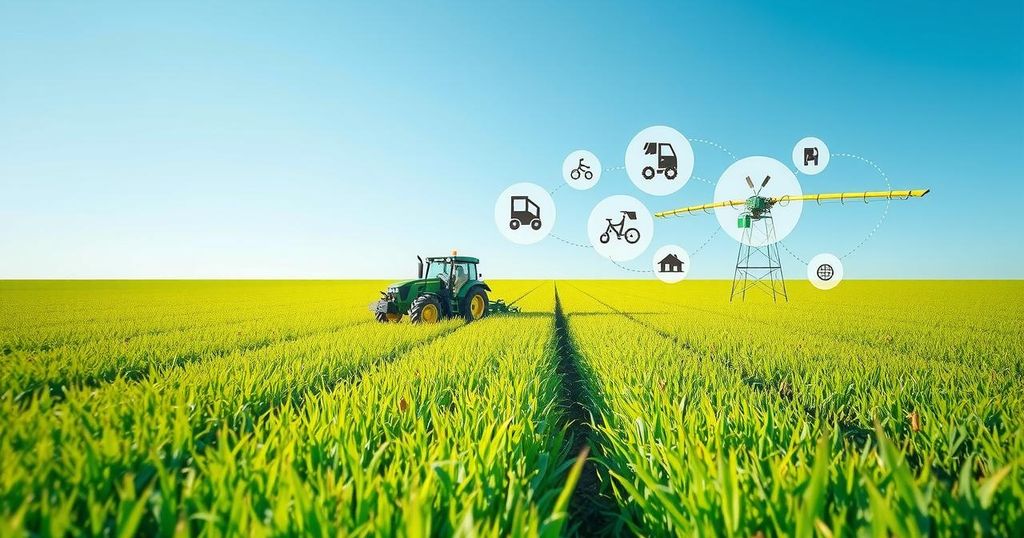KALRO has digitized its agricultural innovations to improve farmer access via digital platforms. This initiative is designed to address challenges faced due to ineffective extension services and climate change. The CGIAR Science Week in Nairobi will showcase advancements in sustainable farming, highlighting the role of science in enhancing food security and addressing climate-related issues in agriculture.
The Kenya Agricultural and Livestock Research Organization (KALRO) has recently digitized its agricultural innovations, thereby enhancing accessibility for farmers through user-friendly digital platforms. Dr. Eliud Kireger, Director General of KALRO, remarked that this initiative is intended to fill the void left by ineffective extension officers, allowing farmers to easily obtain critical information on sustainable agricultural practices. By digitizing their resources, KALRO seeks to empower farmers with necessary insights regarding climate-smart farming methodologies, advanced seed varieties, and effective pest management strategies.
Dr. Kireger emphasized the significance of this digital transition, especially in light of climate change, a major challenge for smallholder farmers. During the upcoming CGIAR Science Week, taking place from April 7-12 in Nairobi, KALRO plans to present a range of locally developed technologies ready for farmer integration aimed at enhancing food and nutrition security. This event will also highlight how scientific advancements in agriculture can contribute to producing more while conserving natural resources.
Nairobi’s selection as the host for the Science Week underscores Kenya’s prominence as a key hub for agricultural research and innovation in Africa. Dr. Kireger noted that various partners would present successful agricultural transformation models and technologies that have proven effective in other regions. Collaboration with organizations such as CGIAR facilitates funding for research initiatives, which enables the adaptation of innovations suitable for comparable climatic and socioeconomic contexts across Sub-Saharan Africa.
Addressing the impact of drought-resistant agricultural technologies on farmers and the economy, Dr. Kireger explained that fluctuating agricultural outputs directly affect GDP. He reiterated that climate change remains a pressing issue for farmers in Kenya, noting that access to suitable technologies is vital in overcoming these challenges. The Science Week will feature an assortment of adaptations, including innovations for tackling emerging pests and diseases linked to climate change, as well as providing real-time agronomic data to aid farmers.
KALRO aims to ensure that the latest technologies are viable for small- and medium-scale farmers, who often struggle to obtain cutting-edge innovations compared to large-scale operations. Dr. Kireger urged for governmental efforts to enhance affordability of essential agricultural inputs such as seeds and agrochemicals, which are currently considered costly. Furthermore, Dr. Ismahane Elouafi, Executive Managing Director of CGIAR, called for local manufacturing environments conducive to innovation, particularly in areas such as fertilizer production and mechanization.
In advancing local production, initiatives like climate-smart villages have been introduced in Kenya to integrate agroforestry practices, climate-resilient seeds, and solar irrigation systems. Dr. Elouafi observed that Kenyan farmers have become increasingly receptive to modern farming technologies, leading to a surge in demand for quality certified seeds during planting seasons, as evidenced by ongoing concerns over poor seed quality.
In summary, KALRO’s initiative to digitize agricultural technologies aims to improve access for farmers amidst challenges posed by climate change. The upcoming CGIAR Science Week will focus on showcasing innovative solutions while reinforcing the importance of scientific advancements in agriculture. Through partnerships and local initiatives, KALRO and CGIAR are working to foster a more productive and sustainable agricultural landscape in Kenya and beyond.
Original Source: africasciencenews.org




